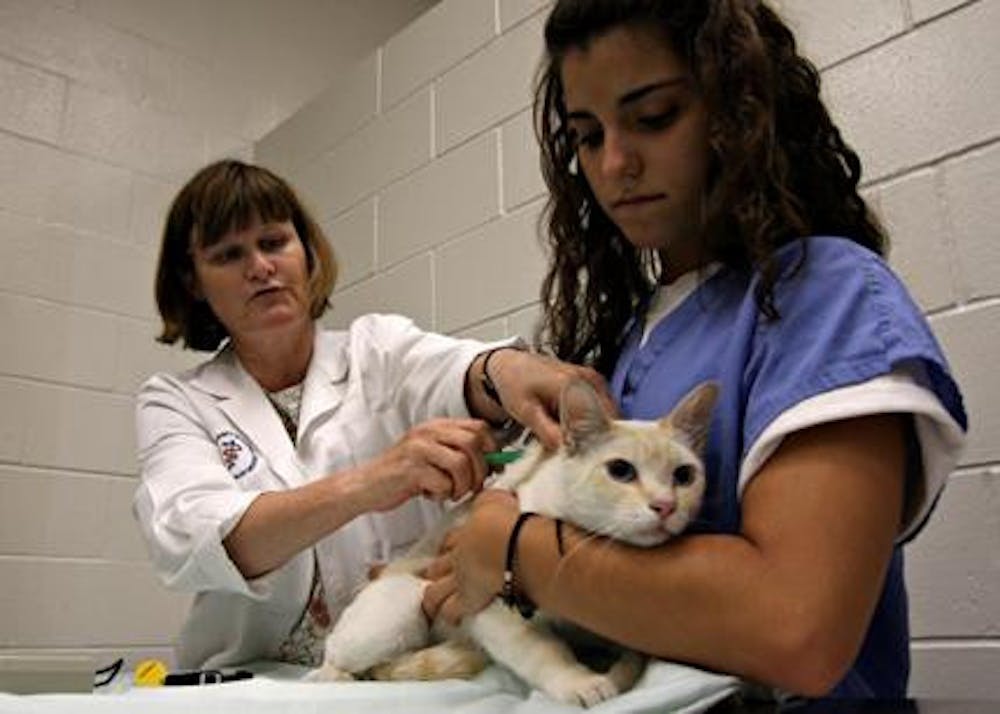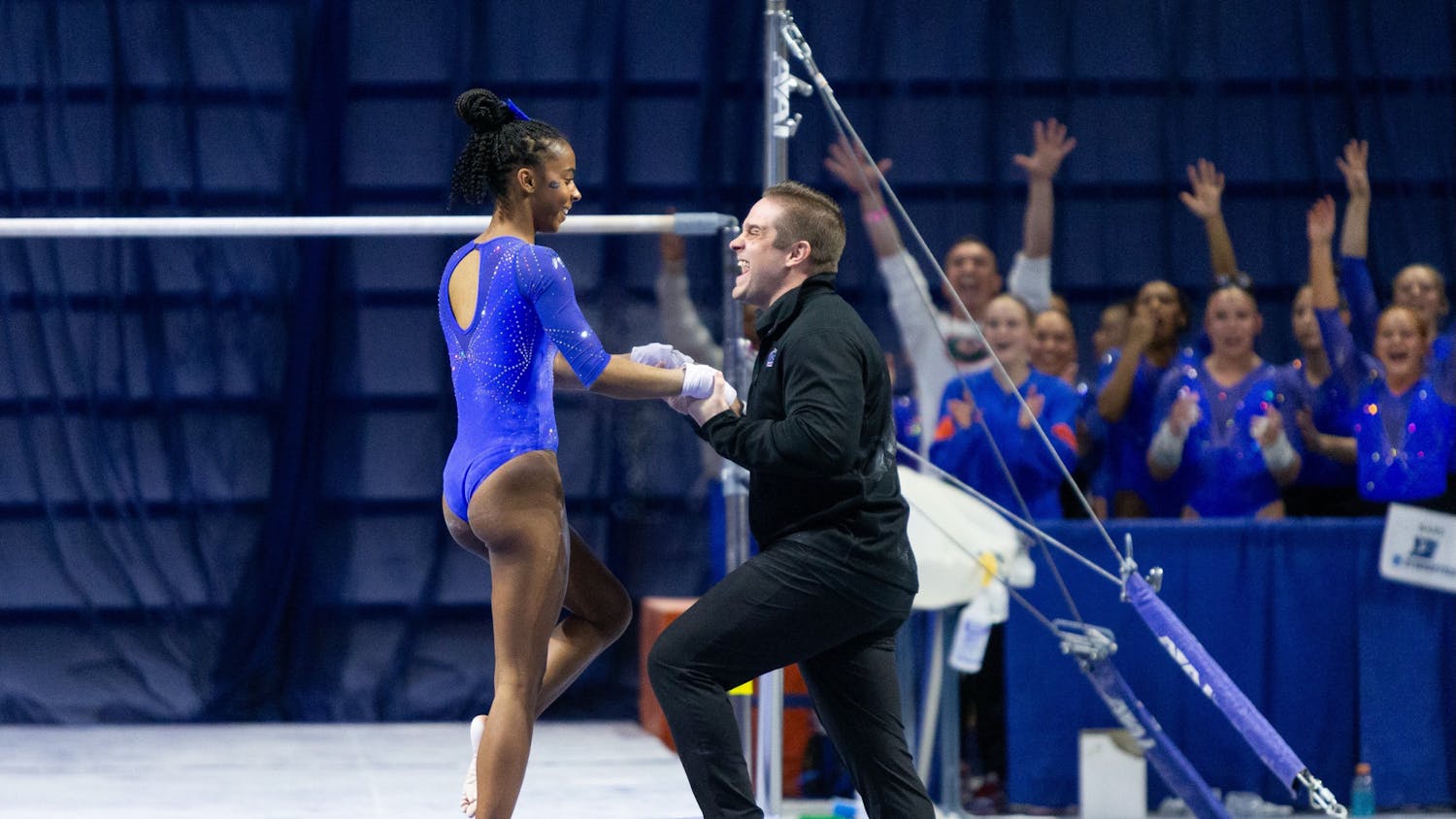Patty Dingman and Anuk do not miss an episode of "Grey's Anatomy."
Curled up on Dingman's bed, Anuk, a 4-year-old gray cat, feigns disinterest in the show that Dingman calls their "guilty pleasure."
Dingman, a 25-year-old UF veterinary graduate student, said Anuk follows her everywhere around the apartment, and she would hate to lose track of her whiskered friend.
Recently, Dingman enrolled Anuk in a UF College of Veterinary Medicine study on the effect of long-term microchip and collar use in returning lost cats to their owners.
The study will determine how much more likely a cat is to be returned to its owner if it is wearing certain forms of identification.
Three other veterinary schools in the nation are participating in the same study.
Microchips act as permanent identification that can be scanned by animal professionals for information about the pet's owner in case a lost pet is found.
The study, headed by internal medicine specialist Dr. Julie Levy, encourages local cat owners to bring their felines in for a free collar and microchip. They are then required to write down observations of their cats' behavior for six months.
Levy said the study is important because every year more than 4,000 lost cats end up at local animal control facilities.
Few of the cats are wearing any form of identification, she said, which makes it almost impossible to reunite them with their owners.
The microchip is inserted with a syringe and doesn't harm the pet, Levy said. Microchips have no known side effects, and tens of millions are already in use in the United States, she said.
The UF program offers a new type of microchip that also reads body temperature. The chip is not yet offered on the market, Levy said.
Although there is a myth that cats cannot safely wear collars, she said a collar and tag provides a way for people without access to a microchip scanner, such as neighbors, to find a lost cat's owner.
All six of Levy's cats have microchips and wear collars.
Levy said she is trying to enroll 180 cats in the UF study.
In the two months since the program began, 150 have already been enrolled.
Dingman admitted she has always felt uncomfortable allowing Anuk to go outside. Before the study, Anuk wore no forms of identification, which made Dingman even more nervous.
"He tries to run outside every time you open a door," she said. "I've always chased him down and brought him back inside. I usually don't give him a chance to get very far."
Dingman thinks Anuk has adjusted very well to wearing a collar, only scratching at it a few times.
"It took me longer to adjust than I think he did just because I'm a really sensitive sleeper, and I could hear him running around at night," she said.
Dingman still does not plan on letting Anuk play outside, though.
"I don't want him to pick up any bad habits or bring fleas into the house," she said.






